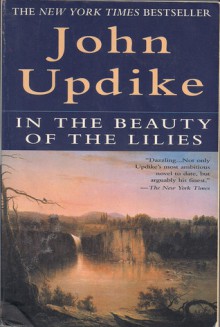James Santel rereads John Updike's Collected Stories:
While not willing to go as far as Franzen, who argues that Updike was “wasting” his “tremendous, Nabokov-level talent,” I was surprised by how many of Updike’s stories impressed me while I read them, and how few left an impression. One can open the Collected Stories to almost any page and find a surprising metaphor, a lovely description, or a wry morsel of irony without remembering much of anything about story that contains it....
The curious paradox of Updike is that he made art into a craft, but only rarely did he transcend craft to achieve art. In a sense, then, the answer to Wood’s question is that beauty is not enough, at least not the beauty of finely tuned prose and vivid images that was Updike’s specialty. Art requires the wedding of aesthetics and morals, and the case might be made that the morals are more important; few people would call Dostoyevsky a beautiful writer, but even fewer would contest that he was a great artist.
I have long been a fan of Updike, if only because he was one of the first really serious writers I read as a teenager. (This is the same reason why I will always have a soft spot for Joyce Carol Oates.) But he writes beautifully and has more to say than he is sometimes given credit for. I prefer his novels to his short stories, which I think are more successful in avoiding the beautiful-nothing problem. One of the projects I have in mind for "someday"--most probably when the kids are out of the house--is to reread his Scarlet Letter trilogy as well as my favorite of his novels, In the Beauty of the Lilies.

 Log in with Facebook
Log in with Facebook 










